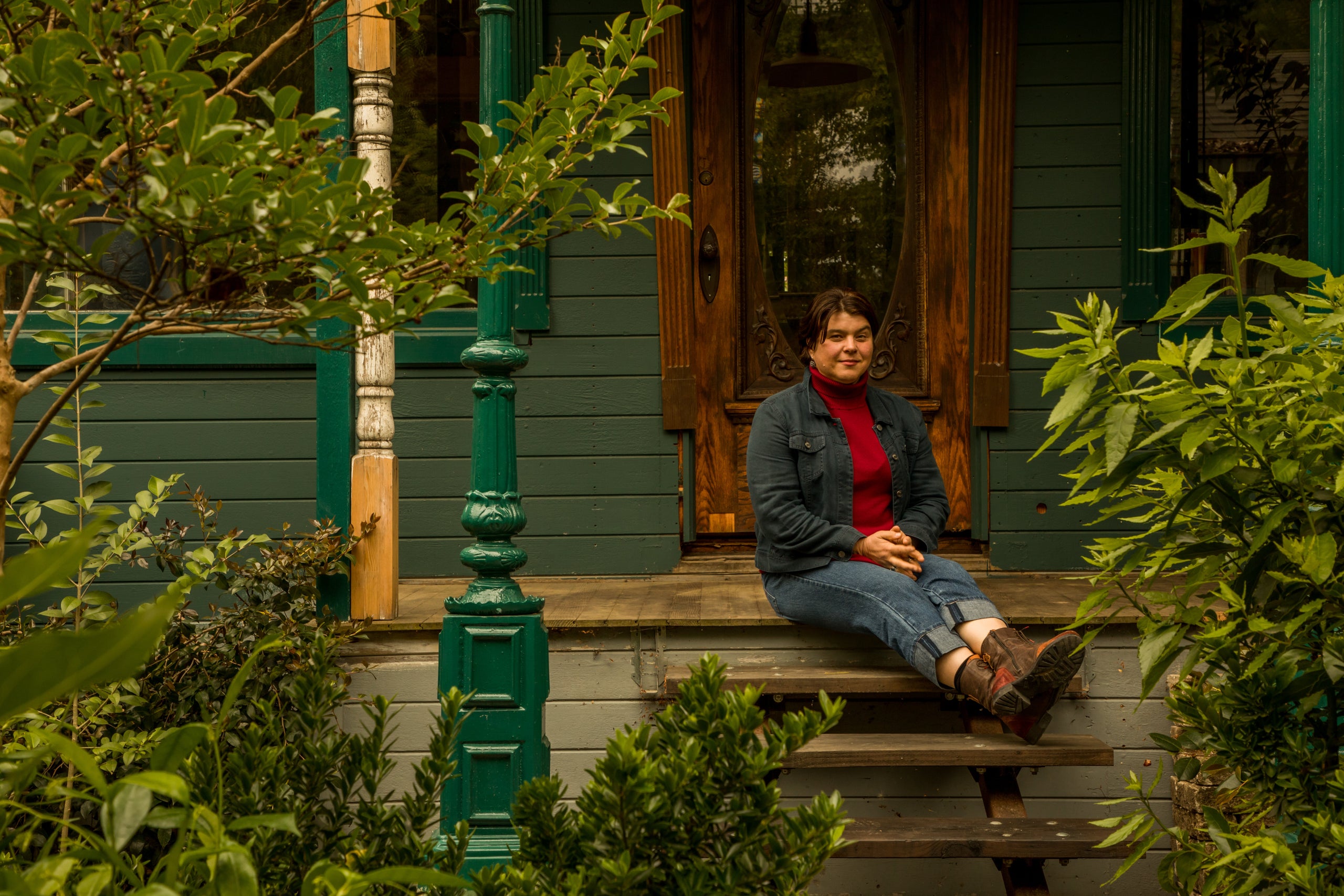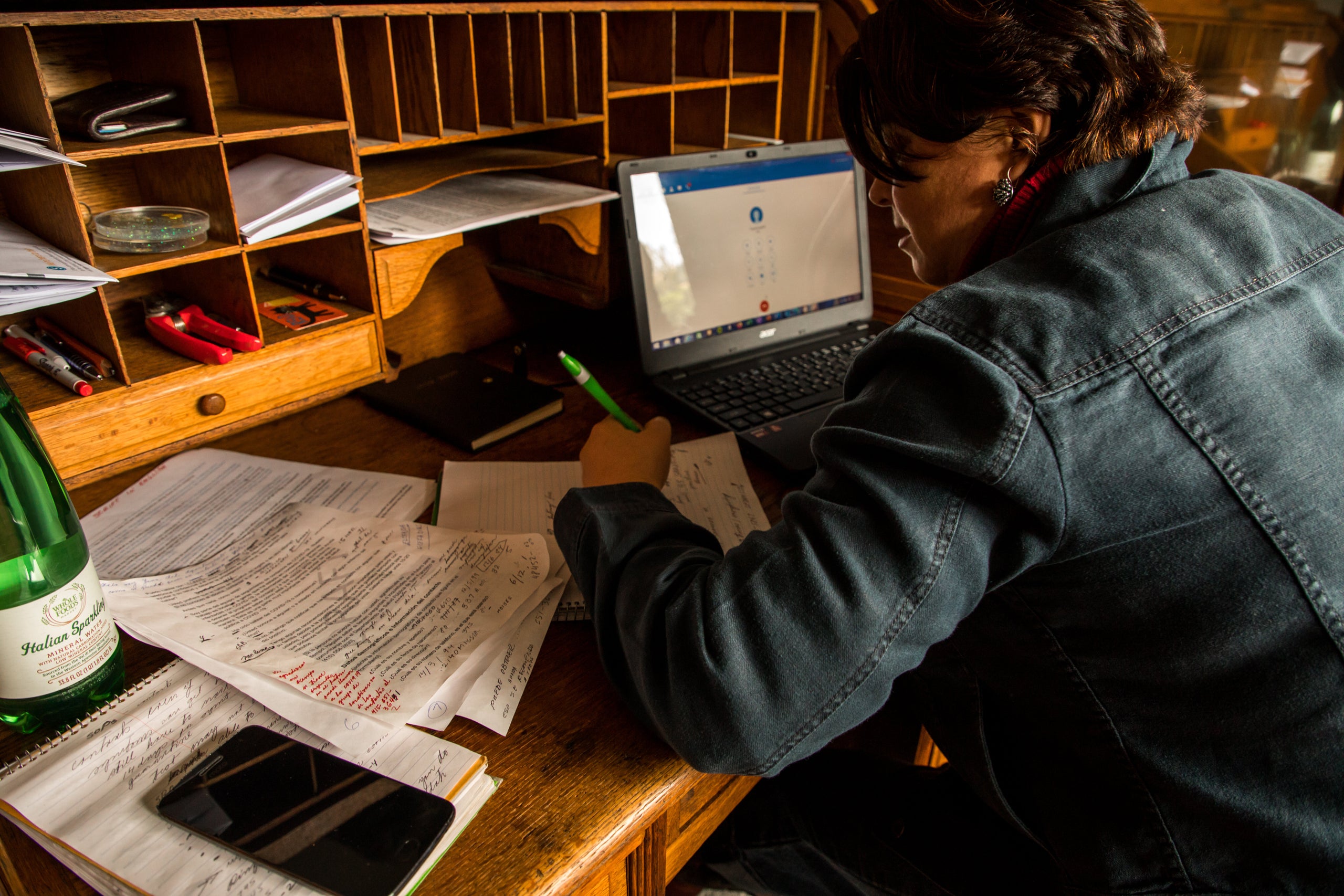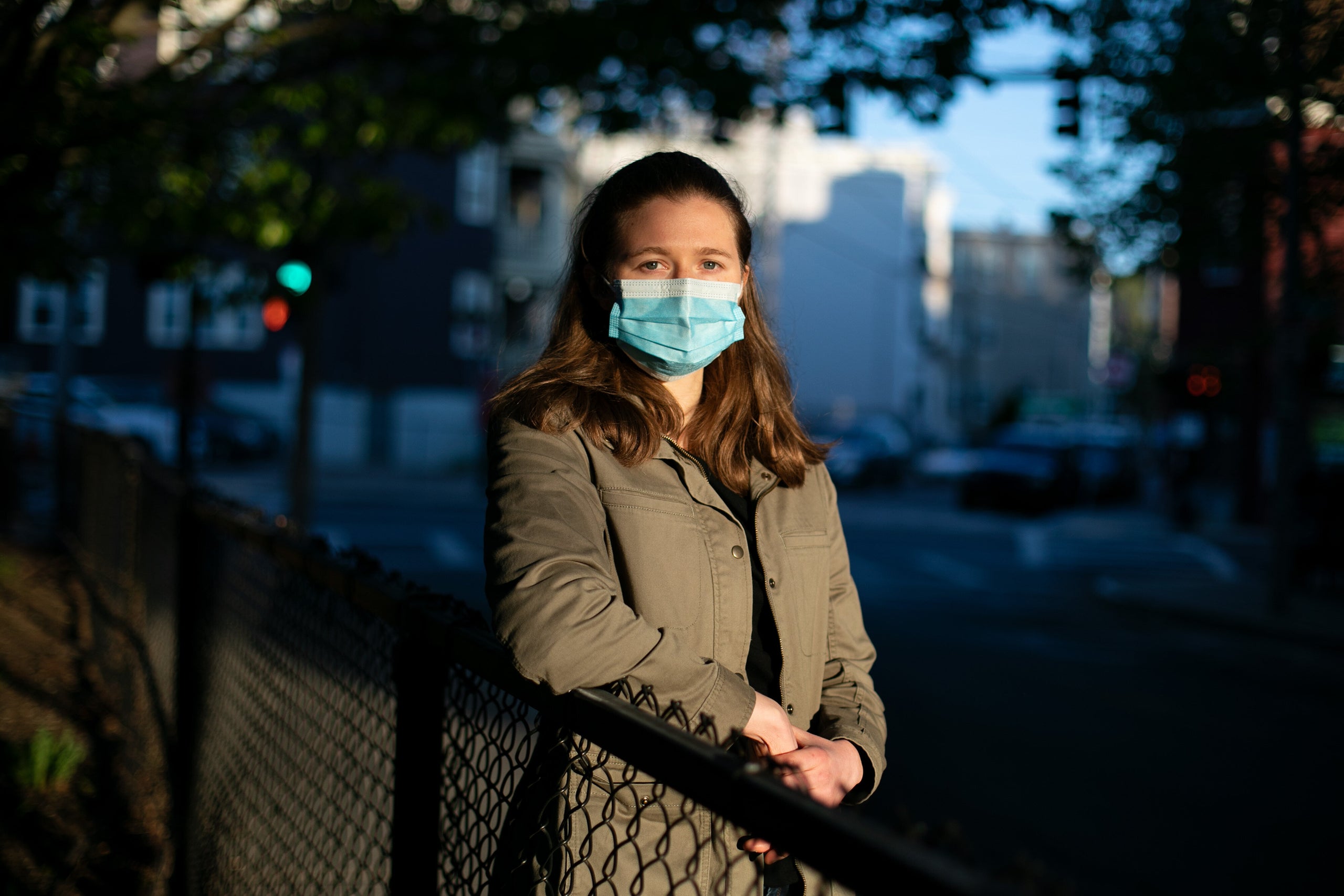Since late April, Jana De Brauwere has added a new routine to her work-from-home schedule. For four hours a day, four days a week, she calls up strangers, asks them if they are experiencing symptoms of the novel coronavirus, and suggests next steps if they are.
De Brauwere, a 44-year-old library manager at the main branch of the San Francisco Library, was furloughed from her job in mid-March when the city issued its stay-at-home order. About a month later, the city called on her and employees from other offices to help its contact-tracing efforts.
De Brauwere is now one of thousands of contact tracers that states are enlisting as part of the re-emergence from stay-at-home orders. Experts believe that a robust and comprehensive system of “disease detectives” is necessary to come as close as possible to identifying all COVID-19 cases and contacting those who might have been exposed as cities and states attempt to reduce disease’s spread.
These efforts to “test, trace, and isolate” also require a simultaneous scale-up in testing to identify people who have been infected. As many as 180,000 contact tracers will be needed until an effective vaccine is on the market, Andy Slavitt, the former acting administrator of the Centers of Medicare and Medicaid Services, and a group of doctors told members of Congress last month.
So far, about 66,000 contact tracers have been hired, according to data NPR collected.

States and cities are largely left to their own devices to rally these armies of contact tracers. And the number an area needs depends on the average expected caseload, said George Rutherford, the head of disease and global epidemiology at the University of California, San Francisco, who is advising the California Department of Public Health on contact tracing.
If it takes about one hour on the phone with each new person who tests positive, and each of them names an average of four contacts, that’s five hours tracing time per case. The U.S. has been adding around 20,000 new cases a day for weeks now, to give a sense of what that looks like at the national level.
Public health researchers have urged states to ramp up contact tracing as quickly as possible before communities begin returning to a new normal.
Anyone can do it if they’re trained properly.
“If we can find nearly every case, and trace the contacts of each case, it will be possible, in time, to relax the bluntest of approaches: the extreme social distancing measures, such as stay-at-home orders, and realize the commensurate social and economic benefits,” said a report from Johns Hopkins Bloomberg School of Public Health.
But even as states build that capacity, contact tracers run into limitations, including the speed of testing, the faultiness of human memory, and the distrust of phone calls from strangers.
An Old Method For A New Disease
Contact tracing is a public health technique developed in the 1930s largely to control sexually transmitted infections. After a diagnosis, health workers record the patient’s information in a centralized database, so contact tracers know who to reach out to provide counsel and medical services. For coronavirus, the methodology is largely the same.
In early April, San Francisco officials put out a call for senior medical and nursing students to volunteer. They also emailed city employees asking them to take on a new duty in a time of need, as all are designated as disaster service workers.
“I remembered that was in my contract,” said De Brauwere, who has worked at the library for eight years. “And I specifically remember thinking: ‘I wonder what that means?’”
Like many Californians, her first thought was an earthquake. But De Brauwere said she is grateful that the city asked for volunteers for the contact tracing work. “Our goal as a library is to connect people with information, and that’s what we’re essentially doing with contact tracing. The stakes are just higher.”
The city considers the contact tracing work a higher priority than her library work, which means De Brauwere’s post can be extended for as long as there’s a need.

Applications to volunteer “poured in,” Rutherford said. The city now has 150 contact tracers, and has started partnering with the University of California, Los Angeles, to train up to 3,000 civil workers like De Brauwere a week by early July to work throughout the state. Civil workers are paid the same as their previous job, and medical and nursing students are compensated by receiving course credit, according to Rutherford.
Massachusetts launched its contact tracing program in late March with public health students, after Gov. Charlie Baker (R) put out a call for volunteers. Over 1,000 students signed up.
In April, the state turned to the nonprofit global health organization, Partners in Health (PIH), to help recruit and screen applicants for the right skills and interests.
Our goal as a library is to connect people with information, and that’s what we’re essentially doing with contact tracing. The stakes are just higher.
“We wanted people who were empathetic and tech-savvy,” said Joia Mukherjee, who is leading PIH’s contact tracing program. The group has hired physicians, custodians, and musicians ― “anyone who’s able to relate to people, and is not too afraid of making phone calls.”
Tracers hired for PIH are paid $27 an hour, according to Mukherjee. So far, it has hired 1,700 contact tracers and plans to hire more, depending on caseload.
Trainees in San Francisco receive 20 hours of virtual instruction and can listen in as experienced tracers make calls. They also practice making such calls with guidance.
After someone tests positive for coronavirus, a health official logs the case in a centralized database. Contact tracers use the database as a starting point to determine who those people may have been in contact with. De Brauwere other tracers in the San Francisco area use a desktop application called RingCentral that shields their phone numbers as they make calls from their homes.
The tracers pose a set of questions meant to jog the memory of those who have tested positive. Might they have been in contact with anyone from outside the home? Have they gone grocery shopping? Are they still going to work, or taking public transit? Might anyone have visited them from out of town? Did they stop for gas?
Determining who qualifies as a “contact” can be among the most difficult questions. In Washington State, a contact qualifies as anyone who has been within a six-foot radius for 10 minutes or more. In Massachusetts, a contact is anyone within a six-foot radius for 15 minutes or more. And many parts of the country still face long lag times in testing ― meaning the tracers are asking people to remember who they were in contact with five to seven days ago.
The tracers then call those anyone who was in close contact with that person to check on their health and recommend testing and self-quarantine. For privacy reasons, they don’t disclose the name of the COVID-positive person.
‘You Can’t Force Anyone To Say Anything’
Jessica Schiff began volunteering as a contact tracer as she was finishing her semester at Harvard University’s T.H. Chan School of Public Health, working weekends and during breaks between classes. The 25-year-old had previously been studying exposure to methane gas and other public health issues.
One of the challenges she found was getting people to talk. Some people who have been exposed hung up on her, or didn’t trust her when she mentioned she was working with the state.
“People have different degrees of what they would share or not,” Schiff said. “Beyond not trusting that we’re contact tracers, they might not be comfortable sharing information.”
Those two things combined can make it challenging for contact tracers to communicate with those who might have been exposed.

“You can’t force anyone to say anything,” she said. For contacts who didn’t pick up the phone after three tries, Schiff would make a note of that next to their name, and someone from the public health department would take on that case.
When De Brauwere calls up a possible contact, she needs to verify their address and demographic information with their file. “That’s confidential, so I understand why they would be hesitant in sharing that information,” she said.
Ultimately, contact tracers can’t do much if those they call up don’t want to divulge any information.
Schiff thinks the biggest challenge that other states may face when building a team of contact tracers is how seriously people will take them.
“If people understood that the ‘contact tracers’ are real and working with departments of public health, where information is confidential and private, I think they may be more willing to share pertinent information.” She said she also worries that it might be difficult for people to trust contact tracers without previous experience in health or public health.
All of this will become more apparent in the next few weeks as states attempt to staff these tracer positions. In Massachusetts, Partners in Health has filled enough positions for their initial batch of 1,700 hires and has received more than 37,000 applications over the course of a month.
In New York City, the health department is hiring for its initial goal of 1,000. Maryland is planning to hire at least 1,000 tracers. Washington state has looked to the National Guard and medical professionals, hiring about 1,500 tracers so far.
“Anyone can do it if they’re trained properly,” said De Brauwere.
In a lot of ways, contact tracing isn’t much different from her work as a librarian: talking to strangers and giving them advice. “It’s listening to people with empathy, talking, and helping them narrow things down by asking the appropriate questions,” she said.
A HuffPost Guide To Coronavirus
Calling all HuffPost superfans!
Sign up for membership to become a founding member and help shape HuffPost’s next chapter
Credit: Source link